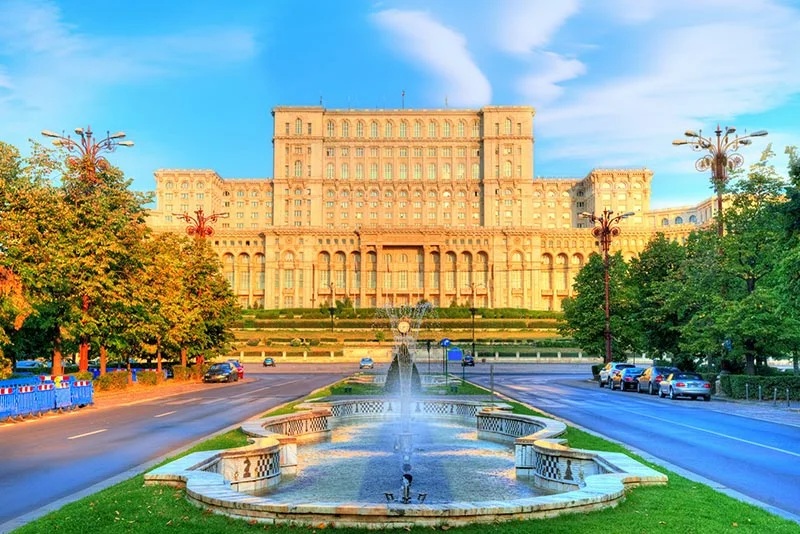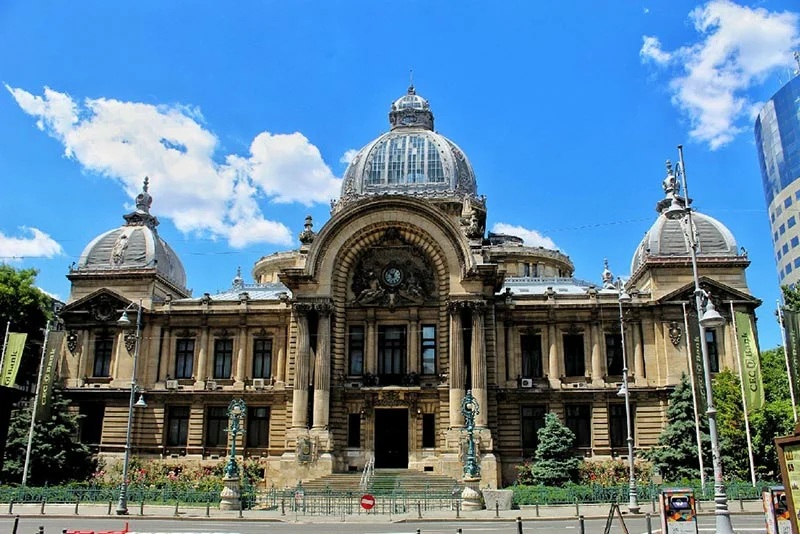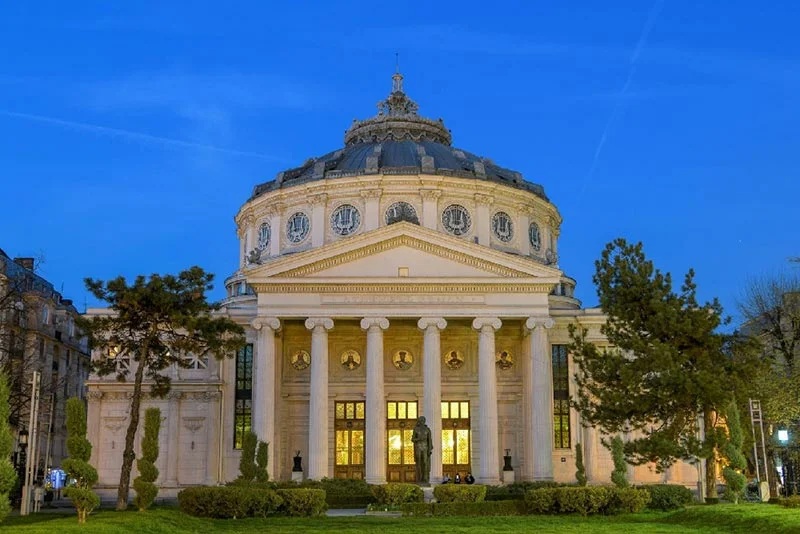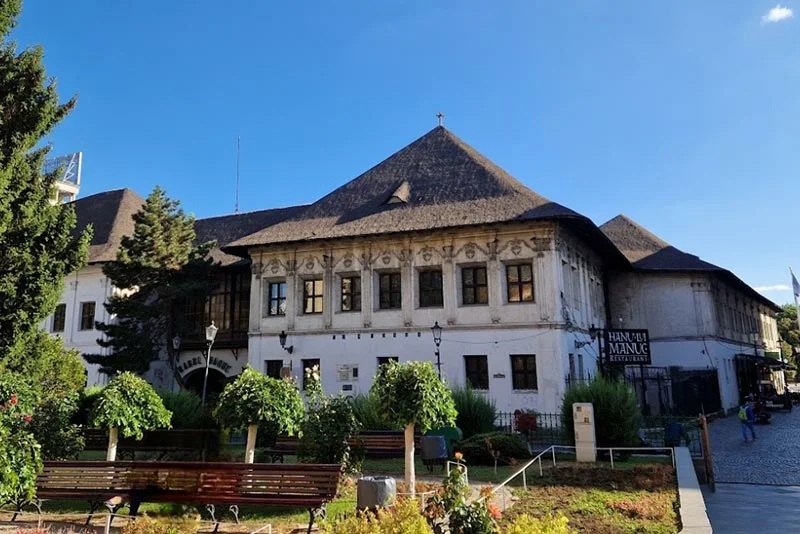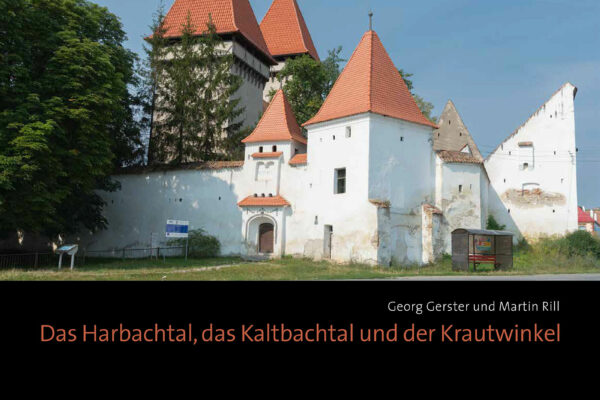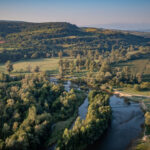
Urlaub in Rumänien – Traveling through the heart of Transylvania in a camper van
27 October 2025
An enchanting December in Brasov and Tâmpa
14 November 2025City Break Bucharest: The most beautiful sights
A city break in Bucharest, the capital of Romania, offers a fascinating mix of history, culture, and modern city life. The metropolis impresses with its diverse architecture, ranging from elegant neoclassical buildings to imposing monuments from its communist past.
The Parliament Building
With a height of 84 meters (12 stories) and a depth of 92 meters (eight basement levels), the Parliament Building is the second largest administrative building in the world after the Pentagon in the USA.
It was built between 1984 and 1989 and covers a total area of around 330,000 square meters. Today, the monumental building houses the offices of the Chamber of Deputies and the Senate of the Romanian Parliament.
The Palace of Parliament is considered a symbol of the power of Nicolae Ceaușescu’s communist regime. Forty thousand people had to be resettled for its construction. It was built almost entirely from Romanian materials, including marble, wood, steel, and carpets. Today, the palace is a landmark of Bucharest and one of the most visited buildings in Romania.
C.E.C. Palace
The foundation stone for the C.E.C. Palace (House of Savings and Records) was laid on June 8, 1897, in the presence of King Carol I of Romania and Queen Elisabeth. Built according to the plans of architect Paul Gottereau, the palace, which incorporates typical elements of late 19th-century French architecture, was completed in 1900.
It is considered one of the most impressive examples of architectural artistry and combines elements of the Neo-Renaissance and Baroque styles. With its imposing dome and richly decorated facades, it remains an impressive building to this day.
The Romanian Athenaeum
The Romanian Athenaeum is one of Bucharest’s most impressive concert halls. It was opened in 1888 and is famous for its dome and the twelve columns that adorn the main entrance.
The building is home to the renowned George Enescu Philharmonic Orchestra. It also serves as a center for cultural events such as concerts, art exhibitions, and conferences. The famous George Enescu Festival, which attracts numerous visitors from all over the world, also takes place here.
Hanu’ lui Manuc
Hanu lui Manuc in Bucharest’s old town is one of the most impressive historical buildings in the Romanian capital and is considered a true gem of the so-called Phanariot period. The inn was built at the beginning of the 19th century (1808–1809) and originally served as a hostel for merchants and travelers. Today, it is the oldest surviving inn in Bucharest.
It was here that the 1812 Treaty of Bucharest was signed, ending the Russo-Turkish War. This event gives the place great historical significance. Today, Hanu’ lui Manuc is one of the city’s most popular attractions. Among other things, the inn offers mici (grilled minced meat rolls) and, of course, Romanian beer, which is brewed according to traditional recipes.
Carturesti Carusel Bookstore
The Cărturești Carusel bookstore is much more than just a “bookstore.” Located in the historic center of Bucharest, it spans six floors and has a total area of around 1,000 m². A bistro on the upper floor, a multimedia room in the basement, and a contemporary art gallery on the first floor invite visitors to linger, browse, and shop.
The elegant 19th-century building came into the possession of the famous Chrissoveloni banking family in 1903, was confiscated during the communist era, and converted into a store.
The Macca-Villacrosse Passage
The Macca-Villacrosse Passage is an elegant, horseshoe-shaped shopping arcade dating from 1891. It was designed by architect Felix Xenopol. With its striking yellow glass roof, ornate bas-reliefs, and stucco decorations, it exudes the charm of the Belle Époque.
The passage was originally built to connect the magnificent Calea Victoriei with the newly created Eugeniu Carada Street, where the imposing headquarters of the National Bank had been erected. Today, the passage is home to numerous cafés and restaurants and is one of the most charming places in Bucharest’s old town.
The Stavropoleos Monastery
The Stavropoleos Monastery near Lipscani Street in Bucharest is considered one of the most beautiful and representative buildings of late Brancoveanu art. It was founded in 1724 by the Greek archimandrite Ioanichie Stratonikeas as a guest church. After the founder’s death in 1741, the complex gradually fell into disrepair.
At the beginning of the 20th century, in 1904, the famous architect Ion Mincu began an extensive restoration program to restore the monastery. Today, the Stavropoleos Monastery impresses with its richly decorated wood and stone carvings, its ornate carvings, and its icons, which are among the most valuable in Romania.
DRS Reisen
Text & Images: DRS Reisen GmbH | Stuttgart

